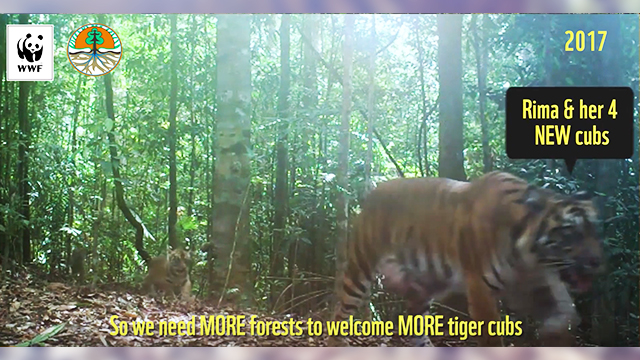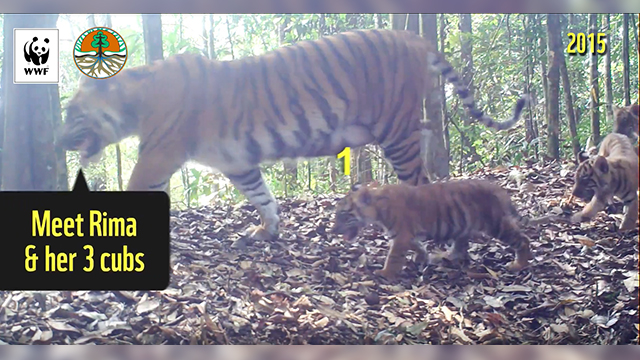Jakarta (Greeners) – Following Global Tiger day on 29 July 2018, WWF Indonesia and Environment and Forestry Ministry released a video showing the successful Sumatran tiger breed in wildlife.
As main predator in the food chain, tiger in the nature holds important role to keep ecosystem balance which protect other species and humans. However, the state of tiger is critical as only 3,900 tigers left in the world.
“From 3,900 tigers, 400 to 600 individuals are in Indonesia, in Sumatran island. We can only found at least five percent from their reach compare to a century ago,” said Diah R. Sulistiowati, Forest, Species and Clean Water campaign coordinator of WWF Indonesia, on Sunday (29/07/2018).
READ ALSO: Ministry of Environment and Forestry Foiled Illegal Trade of 2,000 Birds in Jambi
Furthermore, Sulistiowati said that illegal trade is the biggest and fastest threat for tigers in wildlife. She added that there’s a need for initiatives to change habit to be able to reduce demands on tiger body parts and its byproducts.
“High demand, weak protection and low punishment do not result to deterrent effect, especially the 1990 Law No.5 is still weak to be enforced,” she said.
From official video to Greeners, a female Sumatran tiger, Rima, can be seen with her three cubs walking in the forest. The timestamp of the video is 2015. The next video shows Rima walked with four cubs in a video dated in the year of 2017.
Furthermore, she said that the videos are amazing evidences and proof that tigers can breed if they have protected habitat, have enough preys and not being hunted.
READ ALSO: Indonesia Faces Rampant Illegal Wildlife Trading
Suhandri, director of Sumatra and Wildlife, WWF-Indonesia, said that the videos show that health Sumatran tigers can breed in northern Sumatra and also shows strong commitment from Indonesia’s government, supports from communities, local government and international communities to save tiger and its habitat.
“Restoring tiger population is the key for human to live with natural resources availability,” said Suhandri.
Furthermore, he said that WWF-Indonesia and Indonesian government are working together with other parties, including local villagers to ensure they also the benefit recipients of tiger conservation. WWF-Indonesia is also working with other supporters around the world to play the key role in increasing tiger population and encourage public to choose and buy products from responsible production and does not involve with tiger habitat destruction.
“This is good news that there’s positive development as we also have a target to increase tiger population, one of 25 endangered species, up to ten percent in accordance to Government Performance Indicator mandated by KSDAE director general,” said Suharyono, head of Riau Natural Resources Conservation agency.
Reports by Dewi Purningsih




















































